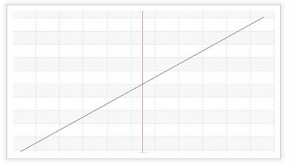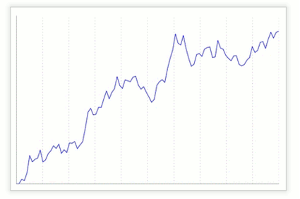When it comes to directional trading, Ian Mitchell, of Successful Trader, thinks there are three main elements that keep a trader consistently profitable; a legitimate and fully comprehensible strategy, consistency, and focus on the big picture.
The question of what makes someone profitable in the markets is one of the most commonly discussed subjects in trading forums and chatrooms. New traders naturally want to know what the main barriers are that separate the professionals from those who never become consistently profitable. We all want to reduce the harsh learning curve in trading as much as possible, right?
In a nutshell, I would say the most difficult part of this profession is accepting the fact that you are, in fact, engaging an organism that is very inconsistent. This organism is known as the market. The market is constantly in flux, changing its volatility, environment, and overall behavior on a regular basis. It changes from high volatility to low volatility, trending to countertrend, and flip-flops with almost every strategy between periods of profitability and periods of loss.
Your exit strategy may work great during one market environment, but do poorly in another. Your entry may work great during trending days, but do poorly during non-trending days. On one day, price may move very easily, while, on the next, price may barely move at all, even if both days have similar volume. Different market forces are constantly entering and exiting the playing field, causing considerable changes in the way price behaves from one instant to the next. No two trading days are ever exactly the same.
For those of us who are pure directional traders, at some point we have to accept the fact that trading is simply a probabilities game; the process of trading is merely an attempt to maintain a profitable win ratio and risk/reward ratio after a series of trades. There is no guarantee that any single trade will be a winner, however after several trades we know that we will be profitable because the probabilities are on our side.
Since the market is always changing, our results are changing as well. Some months will have an exceptional combination of wins combined with a high risk/reward ratio, while others may have below average results. There will be winning and losing streaks and every combination in between, none of which can be predicted ahead of time.
So, how do you approach such uncertainty? There are three main elements, in my opinion, that keep a trader consistently profitable:
- A legitimate strategy that is fully understood and applied in the most favorable market environments.
- Sticking to your rules and trading plan despite whether you are taking wins or losses.
- Focusing on the big picture and realizing that your desired results will only come after a series of trades.
In addition to this, as you become much more experienced and gain a larger amount of screen time you will recognize when you are in draw-down periods and employ additional methods to reduce the damage done to your capital during this time.
A trader starting out for the first time may believe a P&L graph should look like this:
When in reality, if we were to look at a real directional trader’s P&L graph, it might look something like this:
Coming to terms with this concept is one of the main barriers that prevents new traders from ever becoming successful. A large amount of those who try their hand at trading are coming from a salary job where the flow of money only goes one direction. You receive a paycheck monthly or every two weeks; your boss never comes and takes that money back out of your bank account. In trading, the reverse is true. The market can and does routinely take money back out of your trading account that you just made on previous trades.
The bottom line is that directional trading does work over time if you have a legitimate strategy with a probable edge and you have the confidence to trade that strategy through both winning and losing periods, while keeping your focus on the bigger picture at all times.
By Ian Mitchell of Successful Trader























